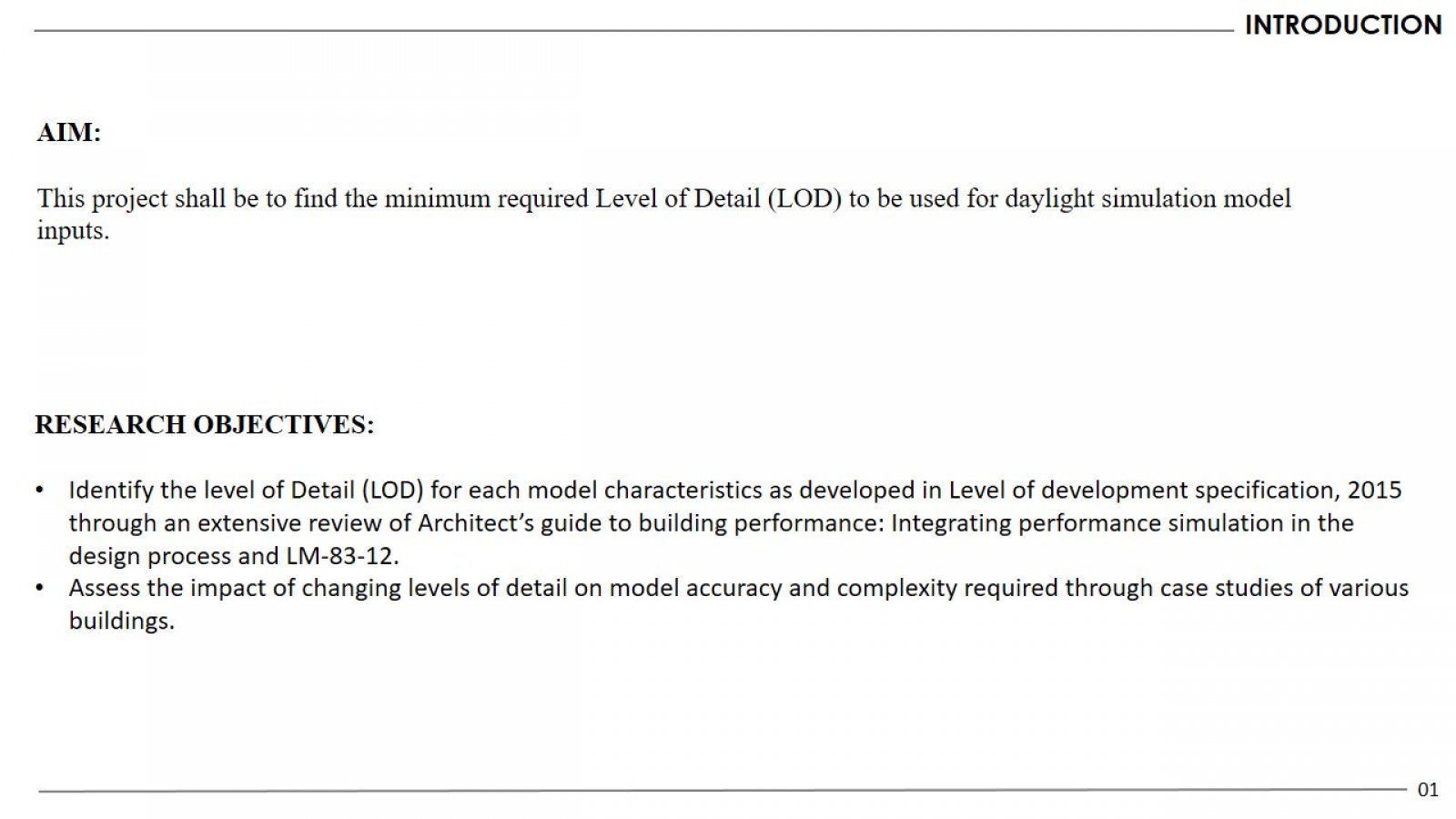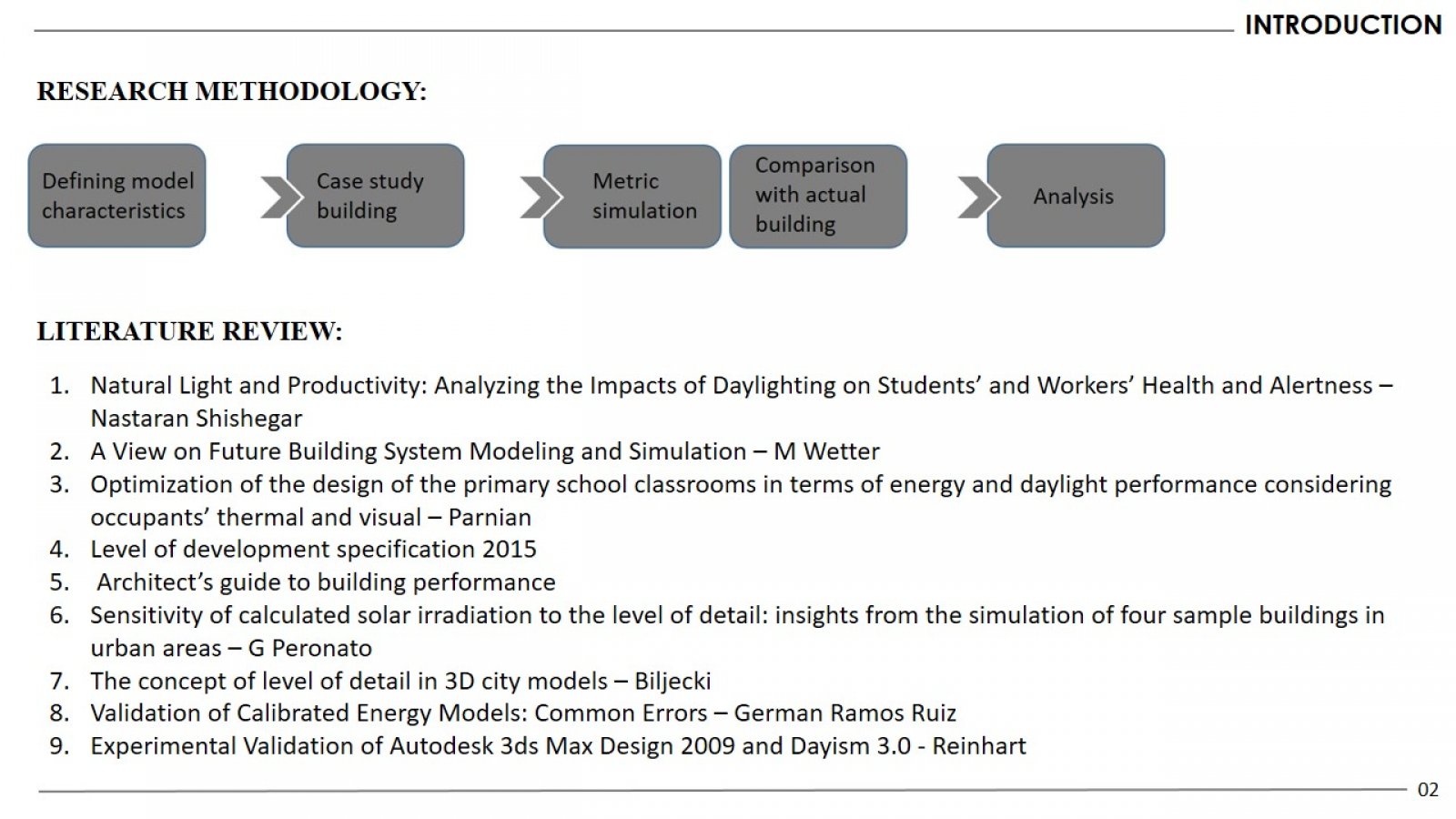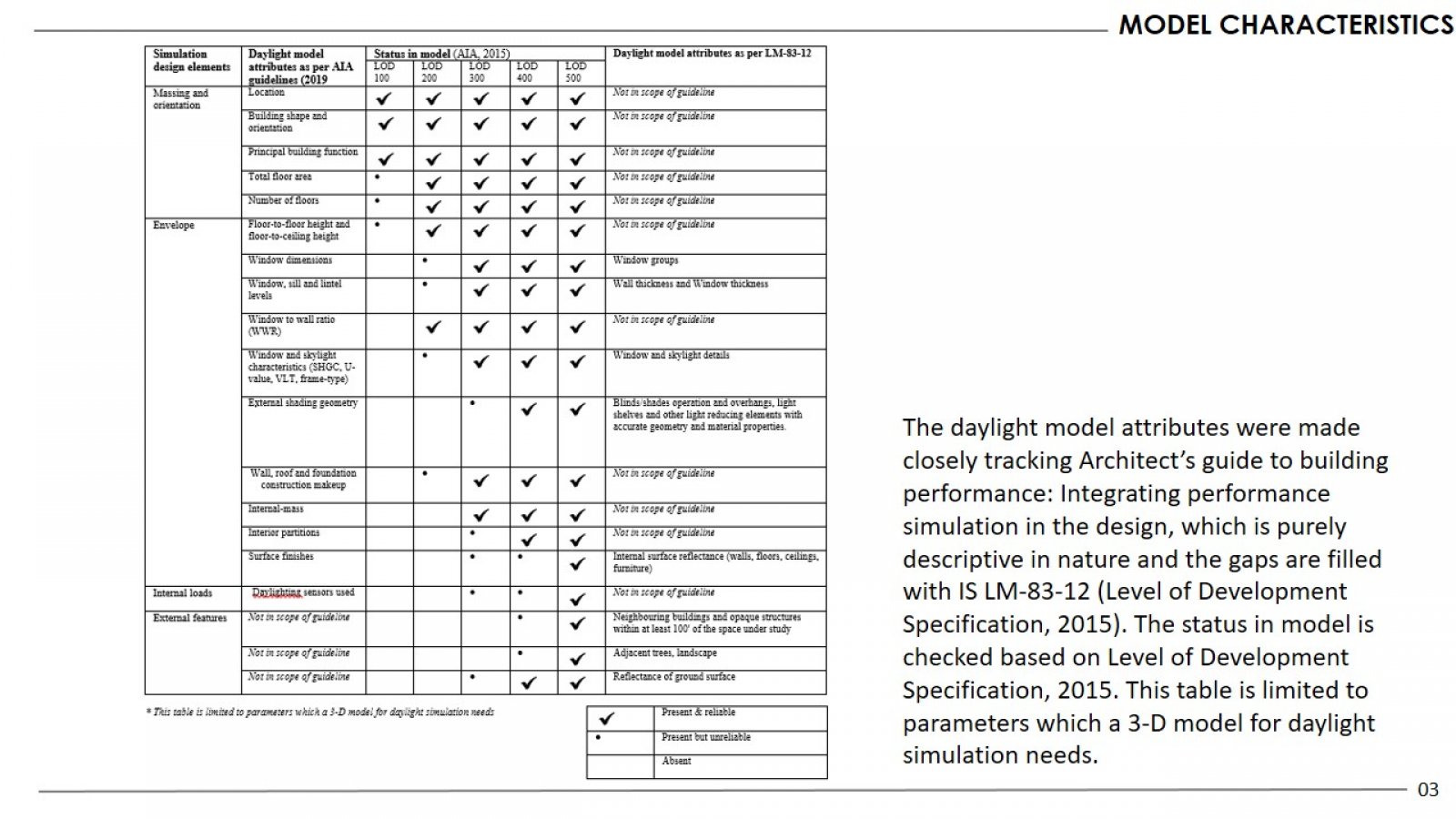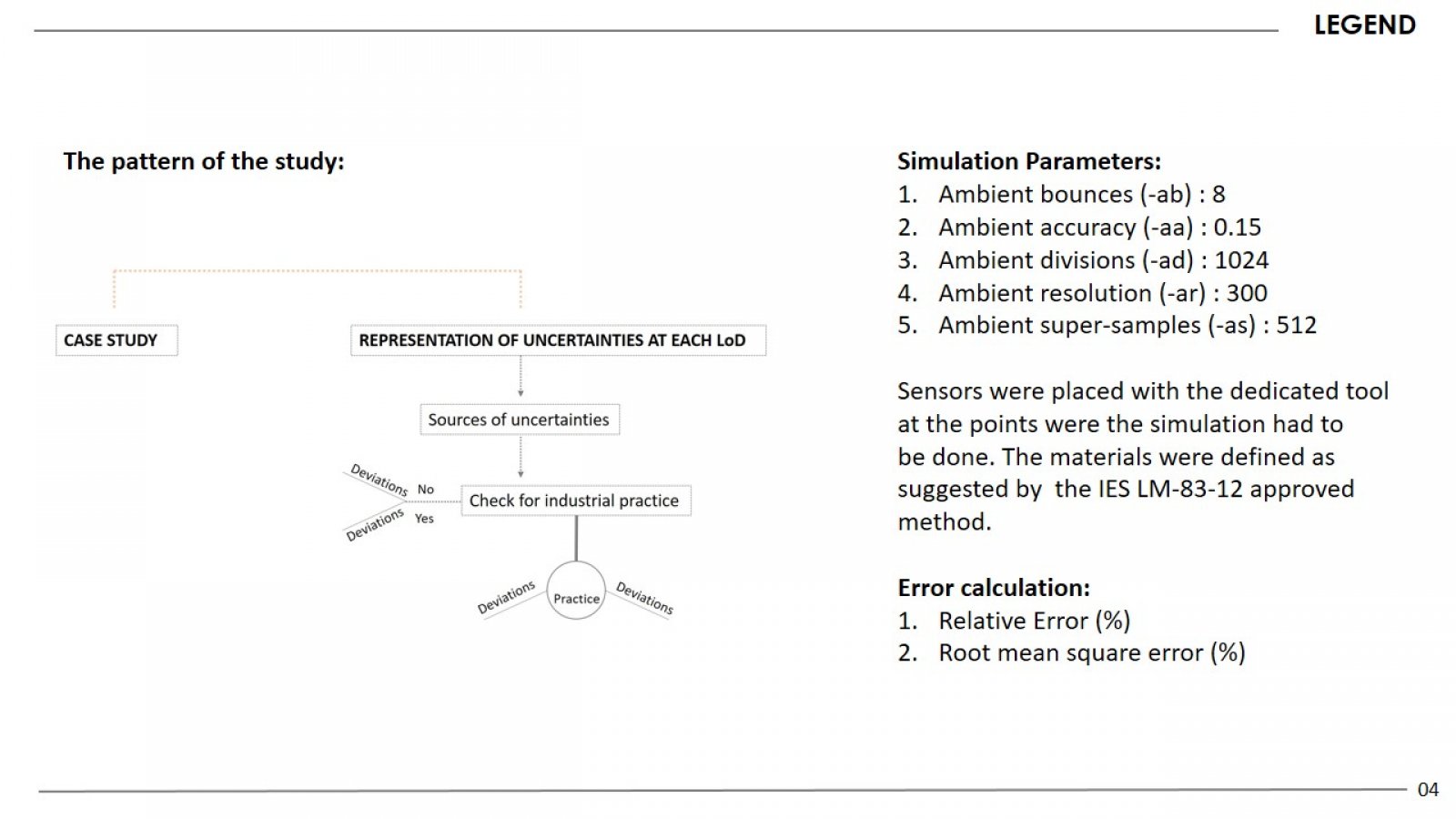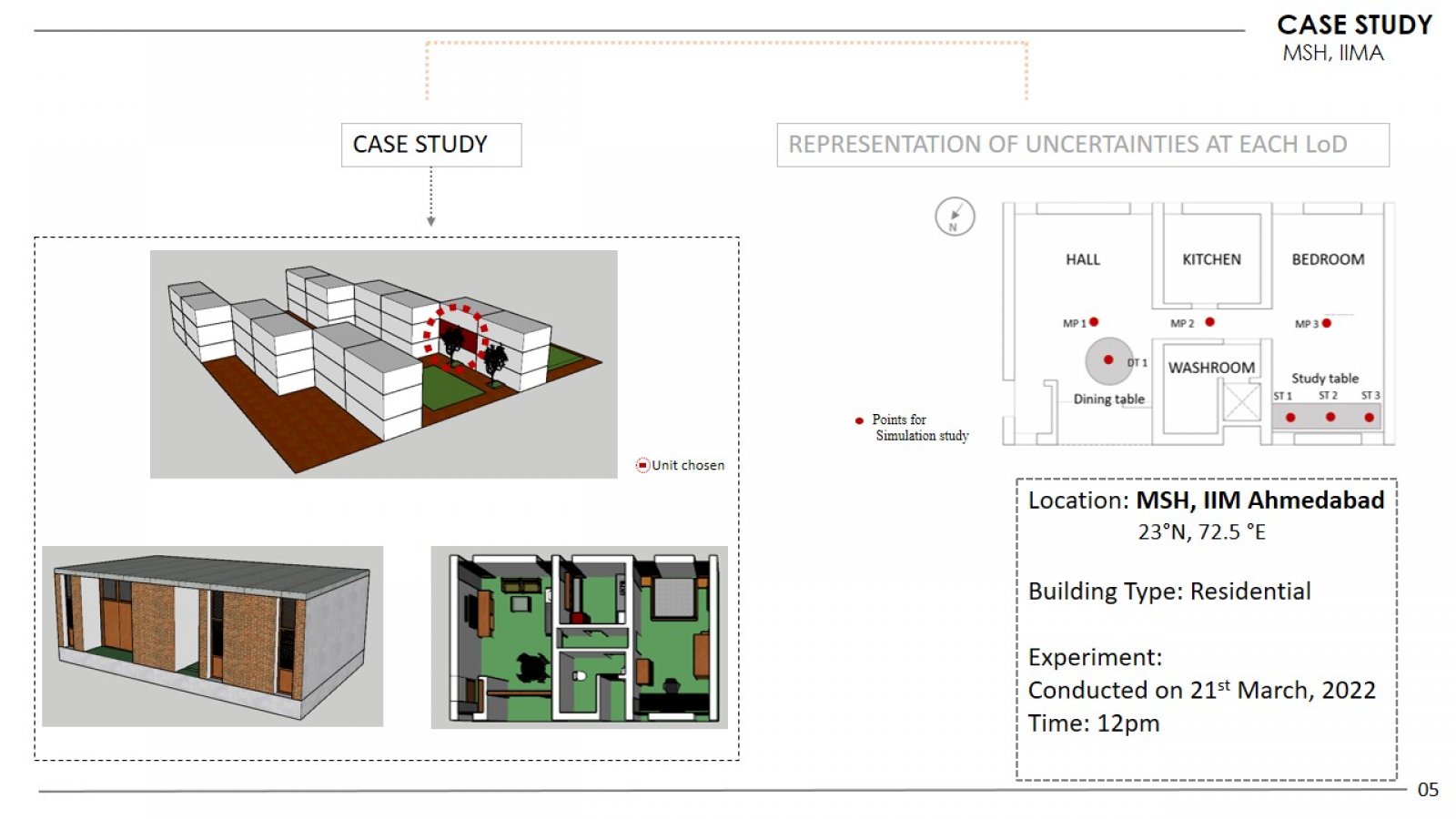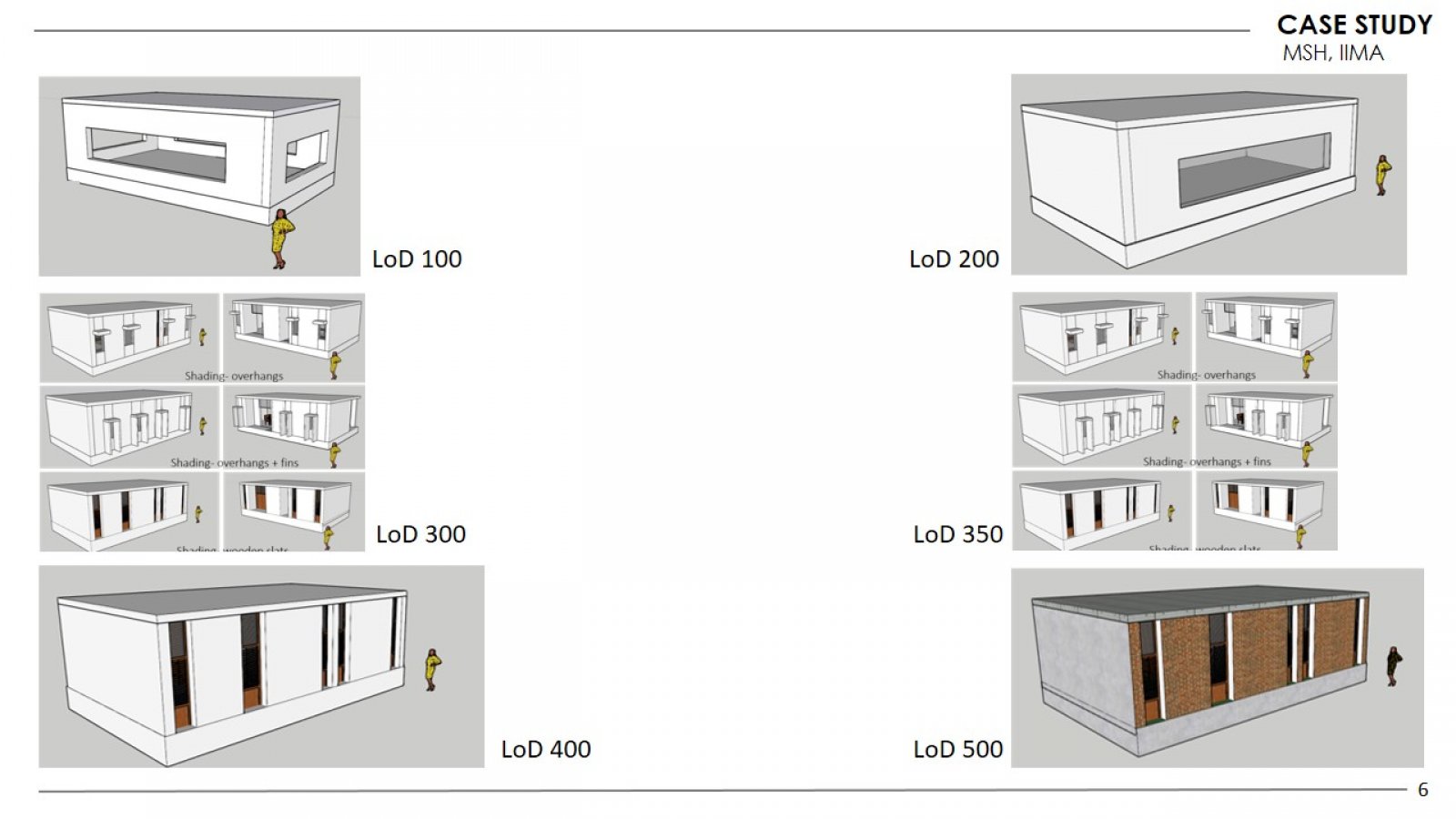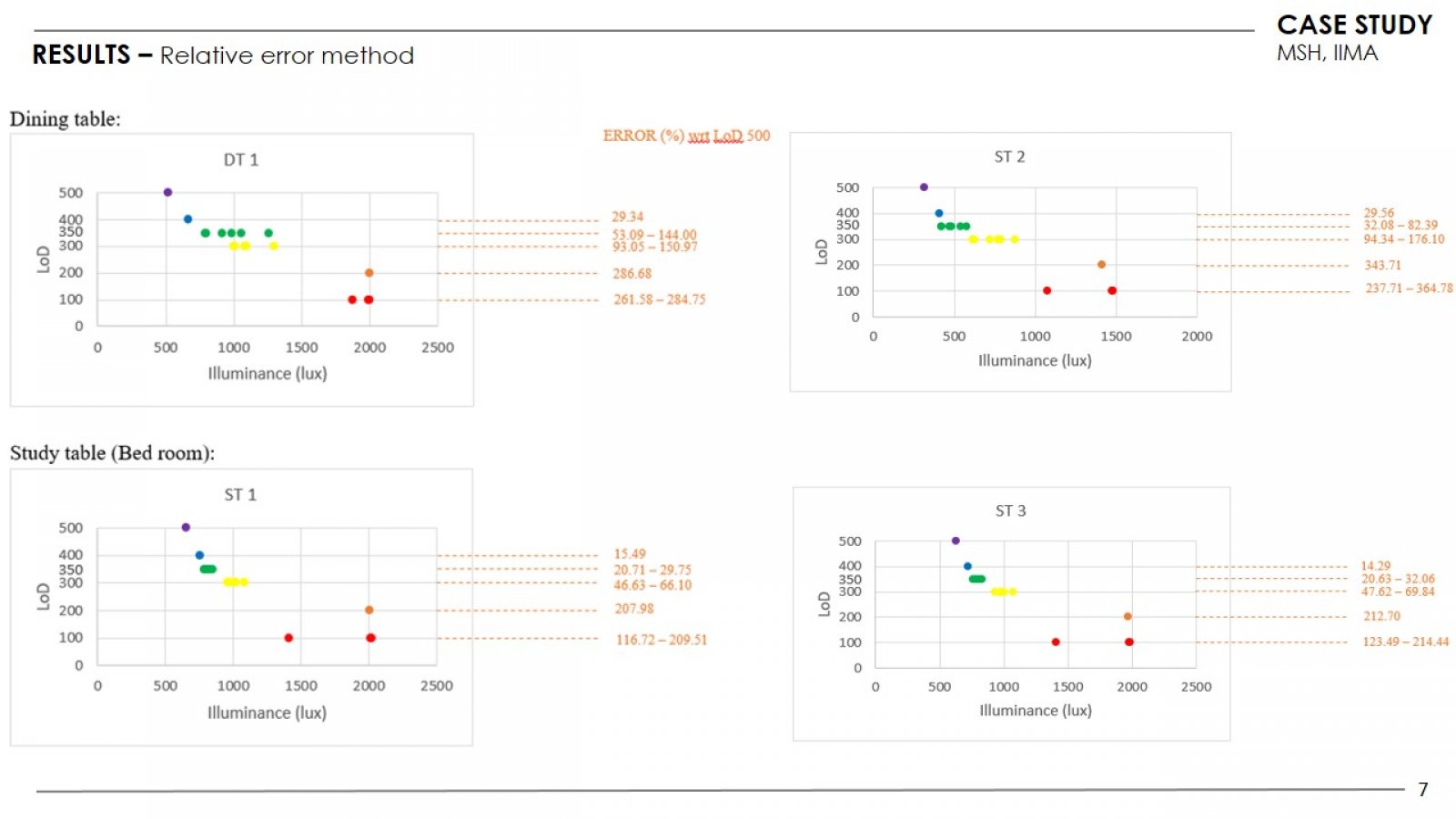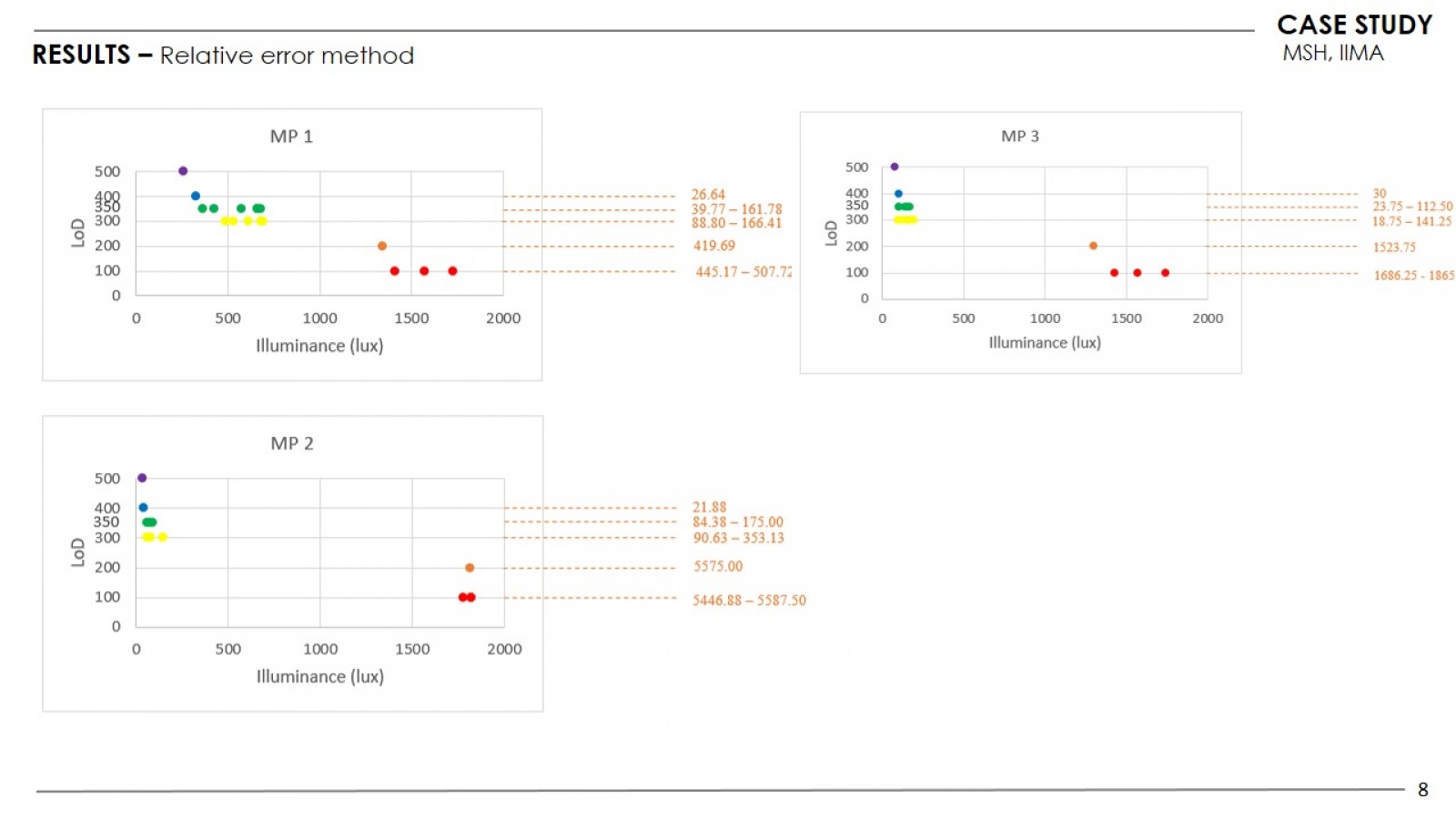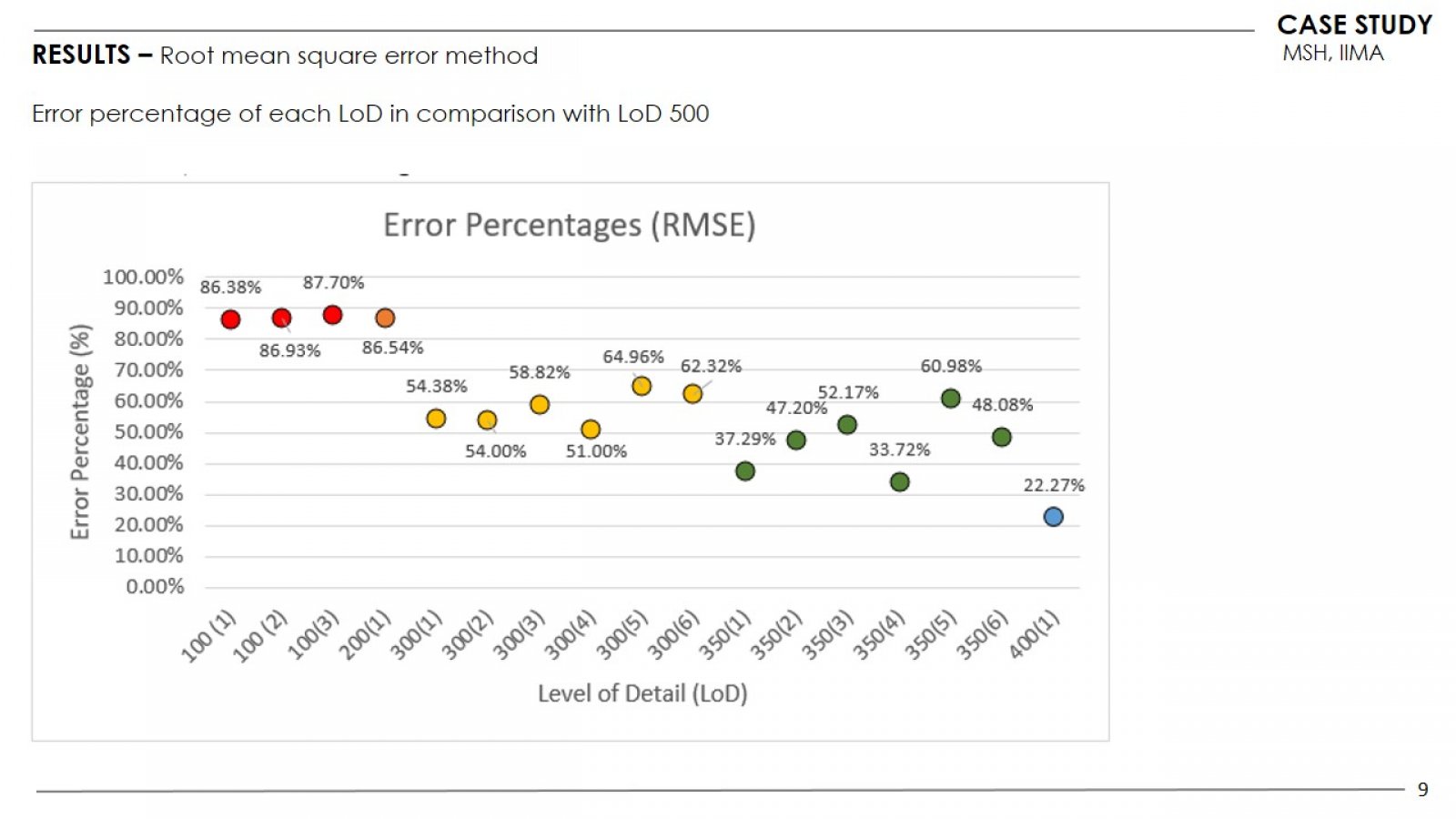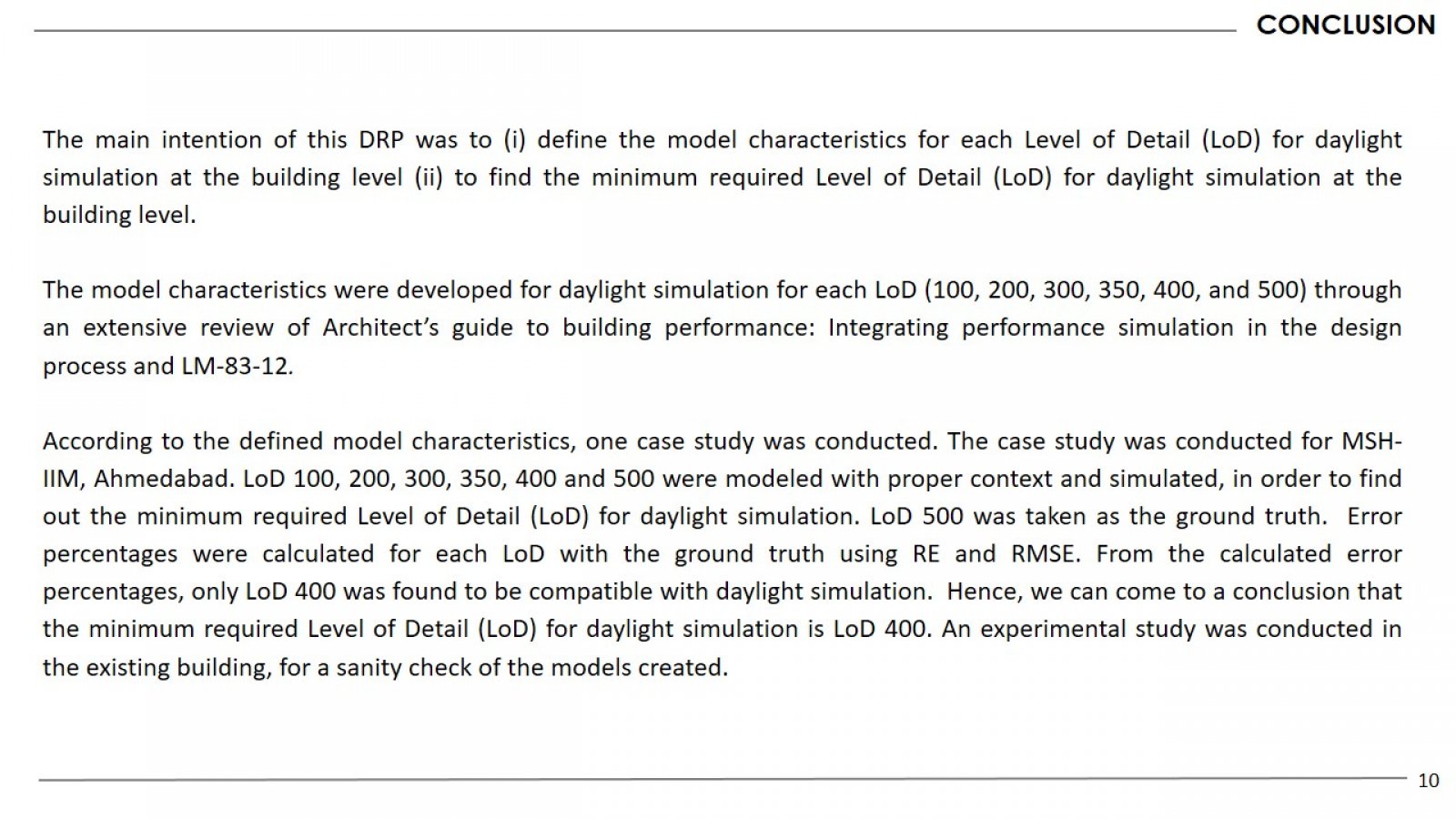Your browser is out-of-date!
For a richer surfing experience on our website, please update your browser. Update my browser now!
For a richer surfing experience on our website, please update your browser. Update my browser now!
Building simulation tools are widely used nowadays for investigating and improving daylight performance of interior spaces. The accuracy and reliability of results depend on the accuracy of inputs.
Model level of detail conventions have been developed by building design and construction industry for consistent interpretation of design information contained in design documents. For example, the level of design development (LoD) convention developed by AIA, has incremental levels where each LoD has a defined set of design details that may be present in it. Such conventions are regularly used to communicate the current state of the design to various members of the design team. The same information is also shared with the simulation specialist. This project shall define the model characteristics needed for each LoD at a building level and shall comment on the minimum required LoD to be used for daylight simulation model inputs at a building level.
The simulation values received for LoD 500 is treated as the “ground truth” for the simulation results of models set up at various LoDs for testing.
Further, this would help in the calculation of daylight and sunlight access metrics such as Daylight Autonomy (DA) and Annual Sunlight Exposure (ASE).
